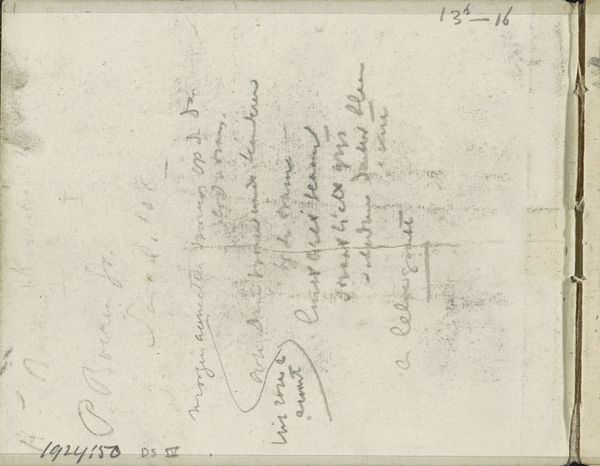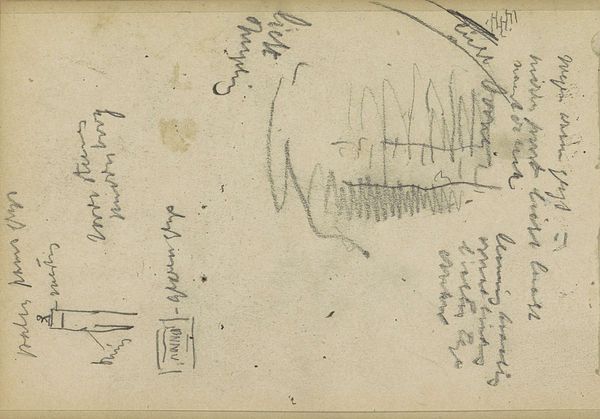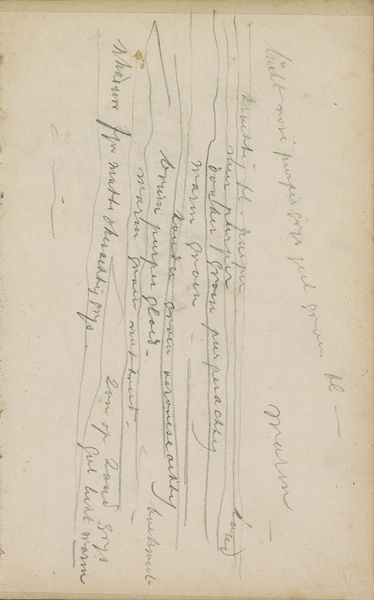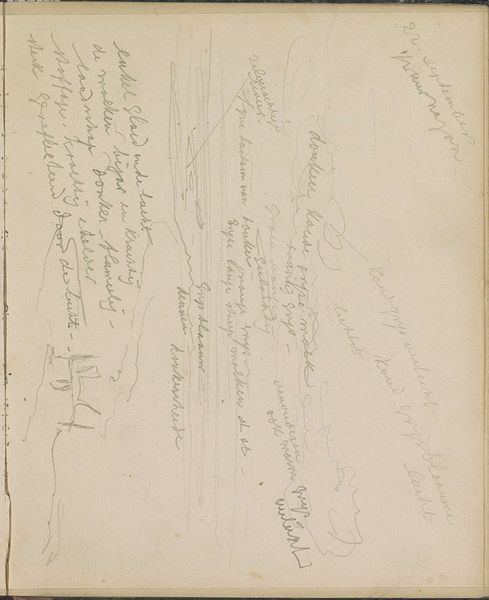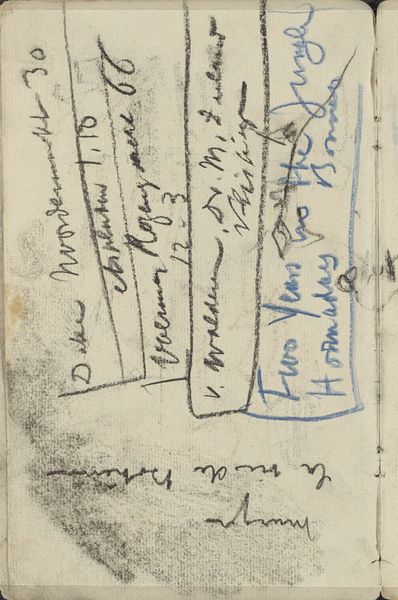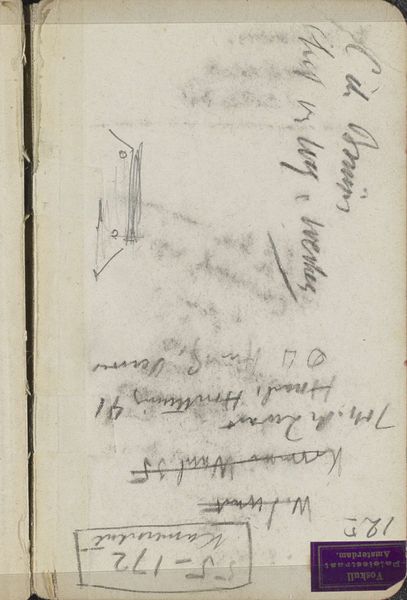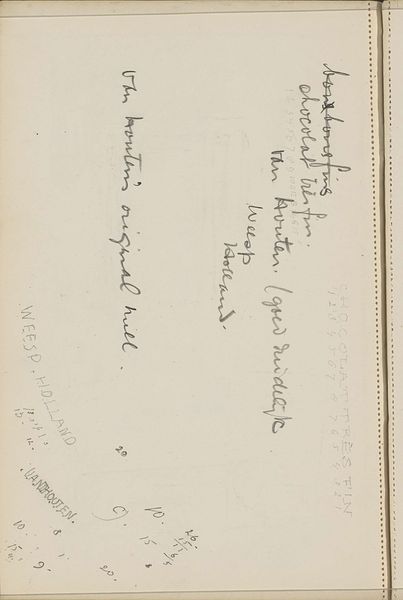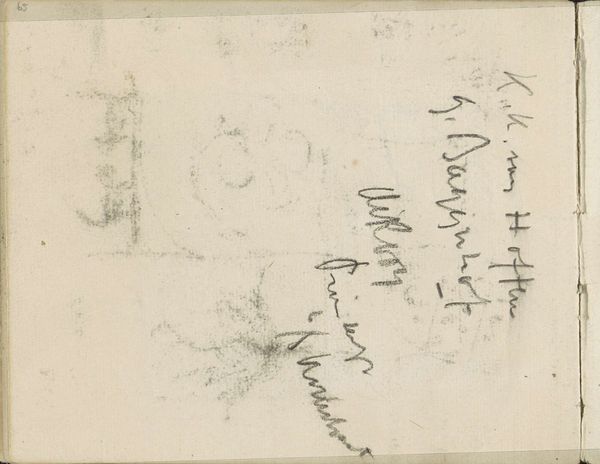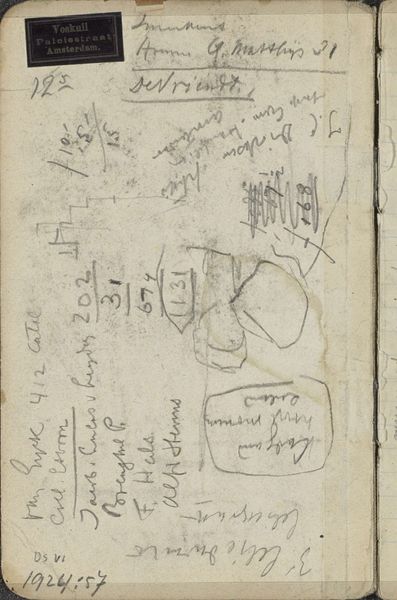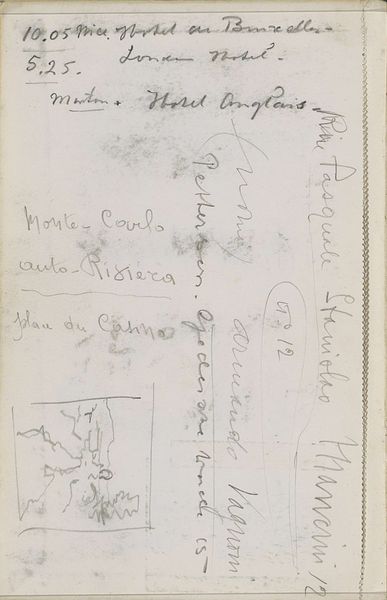
Copyright: Rijks Museum: Open Domain
Curator: This is a sheet of “Notities” – that’s “Notes” – by Cornelis Vreedenburgh. We think it dates somewhere between 1890 and 1946. It’s a monochrome drawing on paper, a page torn from what looks like a sketchbook, held in the collection of the Rijksmuseum. What strikes you about it? Editor: Chaos, organised chaos, perhaps. It’s a map of a mind at work, wouldn’t you say? A bit like rifling through the attic of someone’s thoughts. Curator: Absolutely. It's interesting to see how artists used sketchbooks not just for preliminary studies, but also for jotting down ideas, addresses, even price quotes, blending the practical with the artistic impulse. It's social history on paper. Editor: It feels incredibly intimate, doesn’t it? You see the various hand-drawn types, a sense of fading with words overlapping. Imagine the hand that moved across this paper. It almost tells you that sometimes it’s OK not to have a destination, as long as the journey… exists! Curator: The lack of a clear subject or focal point tells us a lot about the period. There’s less of an emphasis on the grand narrative and more on personal, fragmented observations. Note how Impressionism really championed a looser approach. Editor: Exactly! It feels fresh. Despite the old paper and faded ink. These "notes" are more like poetry. A poem with lots of intriguing footnotes. Do you ever feel like your best ideas scribble themselves onto whatever scrap you find first? Curator: Certainly. Sketchbooks like this offer vital evidence about artistic working methods but also tell the story of art’s democratization. That it became integrated with everyday life, that the boundary between living and making began to blur. Editor: Thinking about that integration, there's something rather satisfying seeing this as complete, and worthy to display like something polished. The imperfect feeling is the point, no? It embraces all of art’s messy edges. I like that feeling of “happening upon”, here. Curator: Yes, there's value in recognizing these scribbled remnants, of seeing artistic creation embedded in daily existence and happenstance. Editor: Beautiful. The world's best things so often appear accidentally. Thank you.
Comments
No comments
Be the first to comment and join the conversation on the ultimate creative platform.
